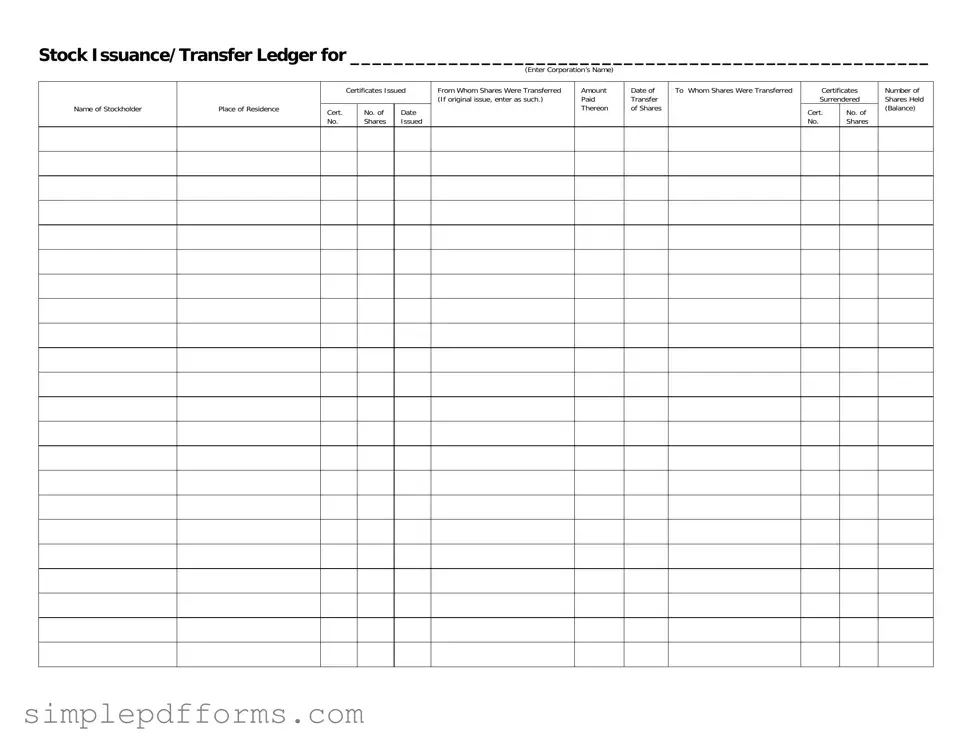Filling out the Stock Transfer Ledger form can seem straightforward, but many people make common mistakes that can lead to issues later. One frequent error is leaving out the corporation's name. This is the first thing anyone will look for, and without it, the entire document can be rendered invalid.
Another common mistake is failing to accurately enter the name of the stockholder. If the name does not match the records, it can create confusion and delay the transfer process. Always double-check the spelling and ensure it matches official documents.
Many individuals also overlook the section for certificates issued. This includes the certificate number and the number of shares issued. Omitting this information can lead to complications in tracking ownership and validating the transfer.
People often forget to specify the amount paid for the shares being transferred. This detail is crucial for accounting purposes and can affect tax implications. Make sure to include this information clearly.
Another mistake is not providing the date of transfer. This date is important for both record-keeping and legal purposes. It establishes when the ownership change took place and can impact future transactions.
When indicating to whom shares were transferred, some individuals fail to include the name of the recipient. Just like with the stockholder's name, accuracy is key. A missing name can lead to disputes over ownership.
Certificates surrendered must also be noted correctly. People sometimes skip this step or fill it out incorrectly, which can complicate the transfer process. Always ensure that the certificate numbers are accurate and correspond to the shares being transferred.
Lastly, it’s essential to report the number of shares held (balance) after the transfer. This information helps maintain accurate records and allows for easy verification of ownership. Failing to include this can lead to confusion about how many shares remain with the original stockholder.

